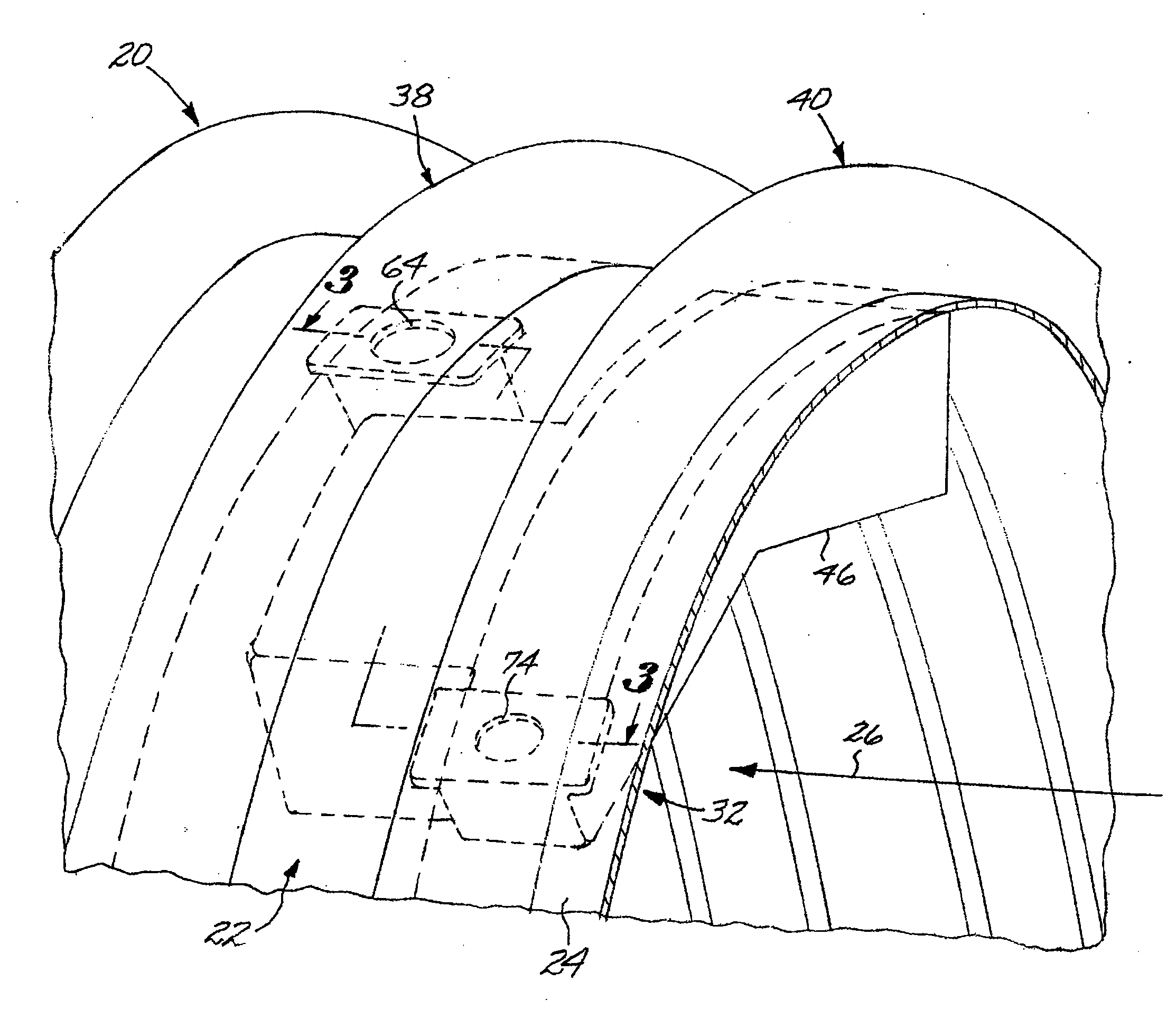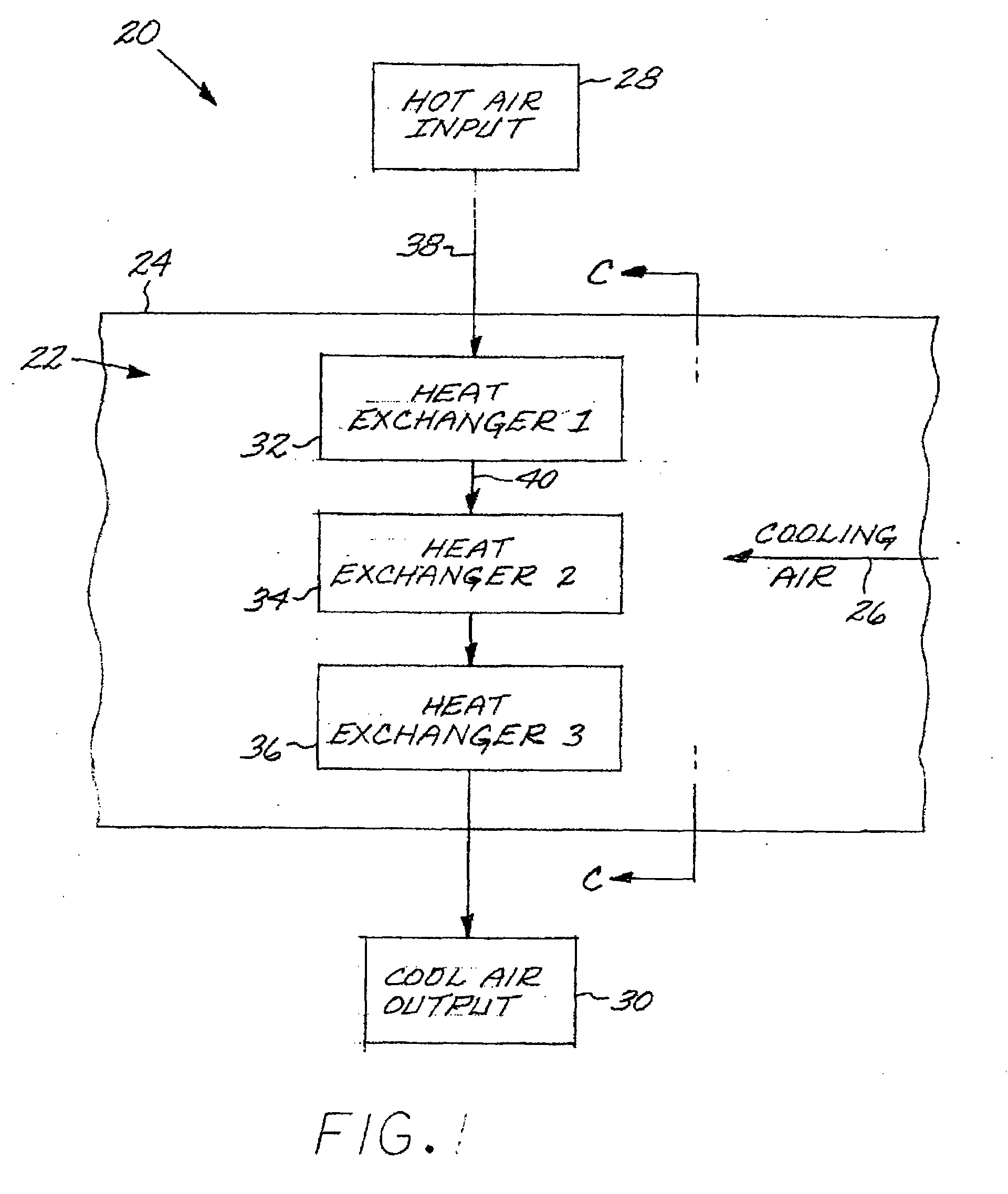Heat exchanger system having manifolds structurally integrated with a duct
a heat exchanger and manifold technology, which is applied in the direction of heat exchanger casings, light and heating apparatus, laminated elements, etc., can solve the problems of saving a substantial amount of weight, and achieve the reduction of the total component weight, the part count and complexity of the heat exchanger system, and the pressure drop through the inlet manifold.
- Summary
- Abstract
- Description
- Claims
- Application Information
AI Technical Summary
Benefits of technology
Problems solved by technology
Method used
Image
Examples
Embodiment Construction
[0023]As used herein, a “fluid” may be a gas or a liquid. The present approach is not limited by the types of fluids that are used. In the preferred application, the cooling fluid is air, and the cooled fluid is air. The present approach may be used for other types of liquid and gaseous fluids, where the cooled fluid and the cooling fluid are the same fluids or different fluids, and may be used either to heat or cool various fluids. Other examples of the cooled fluid and the cooling fluid include hydraulic fluid, fuel, oil, and combustion gas.
[0024]FIG. 1 depicts a heat exchanger system 20 of the present type in general terms. A duct 22 has a duct wall 24. The duct wall 24 typically has a generally cylindrical configuration when viewed in cross section C-C. Cooling air 26 flows through the duct 22. In a typical situation of interest, the duct 22 is the fan duct of a gas turbine engine, and the cooling air 26 is bypass air driven through the fan duct by the bypass fan.
[0025]Hot air i...
PUM
 Login to View More
Login to View More Abstract
Description
Claims
Application Information
 Login to View More
Login to View More - R&D
- Intellectual Property
- Life Sciences
- Materials
- Tech Scout
- Unparalleled Data Quality
- Higher Quality Content
- 60% Fewer Hallucinations
Browse by: Latest US Patents, China's latest patents, Technical Efficacy Thesaurus, Application Domain, Technology Topic, Popular Technical Reports.
© 2025 PatSnap. All rights reserved.Legal|Privacy policy|Modern Slavery Act Transparency Statement|Sitemap|About US| Contact US: help@patsnap.com



